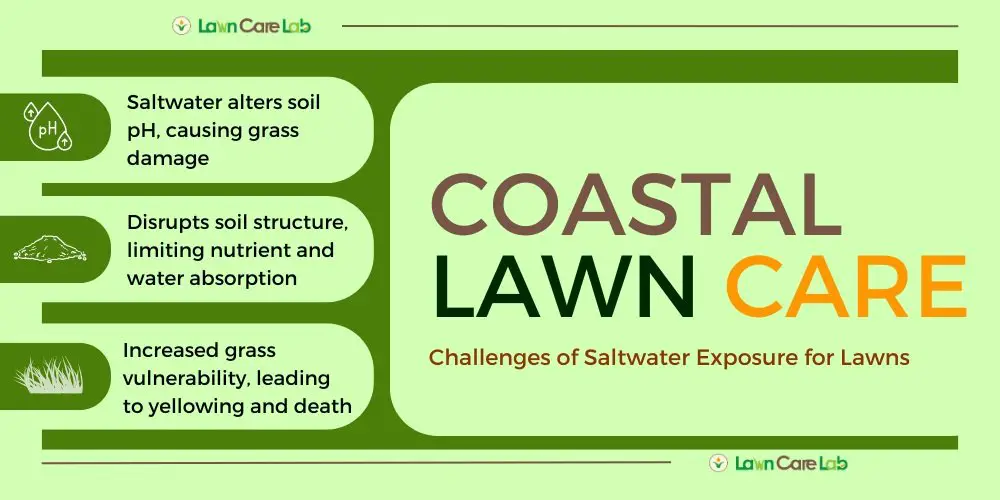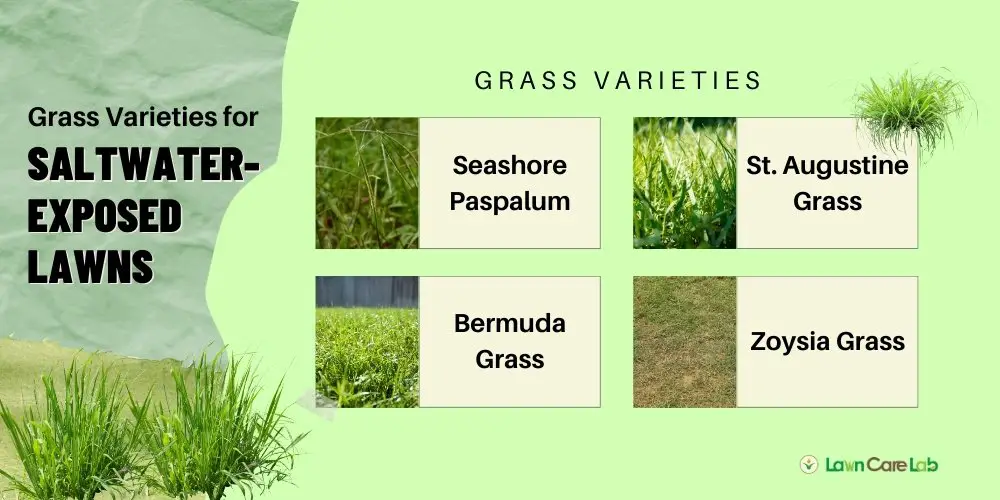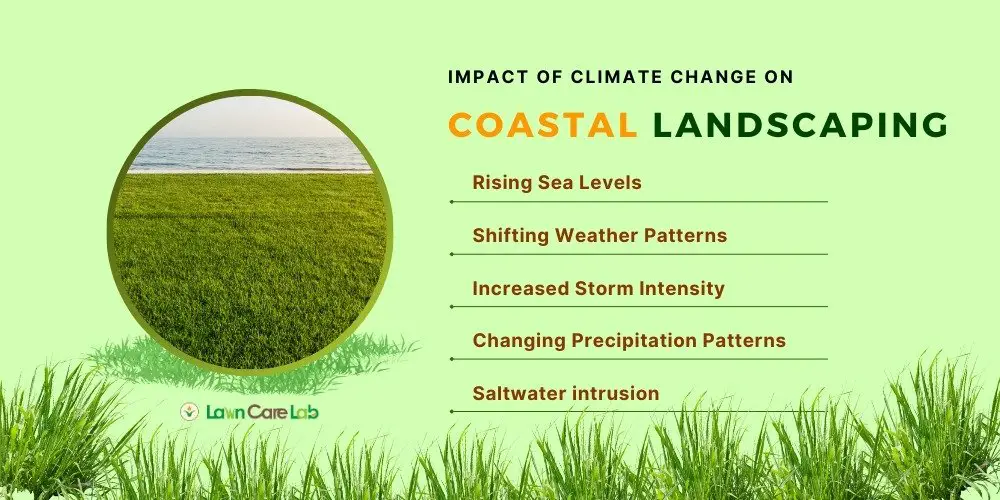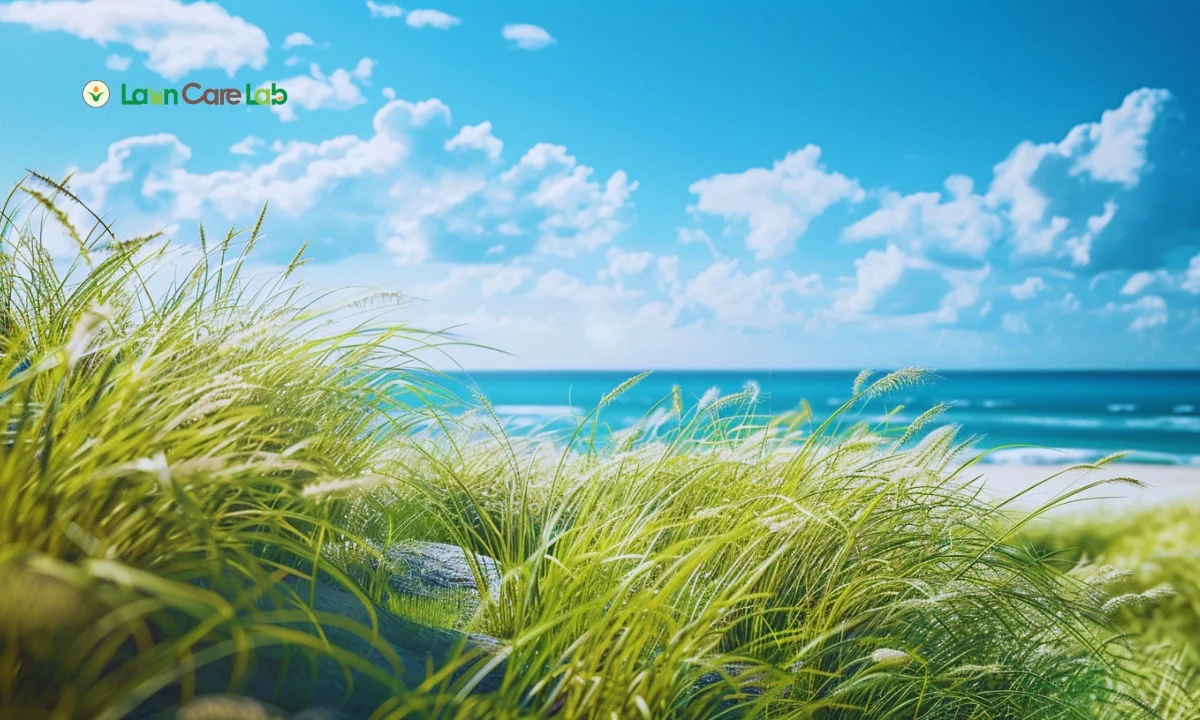Coastal lawn care presents unique challenges, especially when dealing with saltwater exposure. Choosing the right grass variety is key to maintaining a healthy, vibrant lawn near the ocean.
Grasses like Seashore Paspalum, Bermuda, and St. Augustine are popular for their salt tolerance and ability to withstand the tough conditions of coastal environments.
Beyond selecting the right grass, proper soil preparation, irrigation, and salt management techniques are crucial to promoting long-term lawn health.
This article provides an overview of the best grass options and essential care practices for maintaining a resilient, beautiful coastal lawn.
Table of Contents
Introduction to Coastal Lawn Care
Managing a coastal lawn comes with unique challenges that can harm its health and appearance. Saltwater exposure is a major concern. The high salt content in saltwater can damage or kill grass. To keep your lawn healthy, it’s essential to understand how saltwater affects it and take steps to reduce its impact.

When saltwater gets on your lawn, it can cause problems. The salt in the water can dry out the grass, causing it to turn brown or even die. This is because salt stops the grass from getting the water and nutrients it needs. To prevent this, you can flush the salt out of the soil with fresh water. This helps to dilute the salt and reduce its harmful effects.
Another way to protect your lawn from saltwater is to choose a type of grass that can handle salt. Some grasses, like buffalo grass or blue grama grass, are more resistant to salt than others. These grasses have special features that help them survive in coastal environments.
You can also take steps to reduce the amount of saltwater that gets on your lawn. For example, you can install a barrier, like a fence or a wall, to block the saltwater. Or, you can plant trees or shrubs that can help absorb some of the saltwater.
Challenges of Saltwater Exposure for Lawns
Saltwater can alter soil pH and damage grass, leading to yellowing, thinning, and death.
It changes soil structure, making it harder for roots to absorb nutrients and water.
Addressing these challenges through regular monitoring, deep watering, using gypsum, and planting salt-tolerant grasses is key to keeping a coastal lawn healthy.
Optimal Grass Varieties for Saltwater-Exposed Lawns

Choosing the right grass for coastal lawns requires considering salt tolerance, drought resistance, and heat hardiness due to exposure to saltwater, intense sun, and dry conditions.
Top Grass Varieties:
- Seashore Paspalum: Highly salt-tolerant, ideal for areas with seawater exposure. It thrives in heat and drought conditions, with deep roots and a waxy coating for salt protection, making it a low-maintenance, durable choice.
- Bermuda Grass: Known for its resilience, Bermuda grass withstands salt, heat, and drought. It helps prevent soil erosion, making it suitable for areas with varying soil quality but requires more maintenance.
- St. Augustine Grass: Tolerant of shade and moderate salt levels, St. Augustine is a good option for coastal lawns. It requires regular rinsing to prevent salt buildup and may need more upkeep.
- Zoysia Grass: Aesthetic and adaptable, Zoysia handles salt and drought well, though it can be more expensive. It offers a lush, low-maintenance option for sun-exposed coastal areas.
Consider maintenance, budget, and local climate to select the best variety for your needs.
Planting and Maintenance Tips for Coastal Lawns
Effective soil preparation and maintenance are essential for a healthy coastal lawn. Due to salt exposure, coastal soils often lack nutrients, making adjustments crucial for optimal growth.
Soil Preparation and Improvement
When preparing your coastal lawn’s soil, focus on improving drainage and balancing nutrients.
Healthy root growth and development are crucial for withstanding coastal conditions like salt and wind.
To improve drainage and nutrient balance, first check your soil’s composition and structure.
Then, make adjustments as needed. If your soil is too dense, add organic matter like compost or peat moss to loosen it up. This helps roots grow deeper and absorb water better.
If your soil lacks nutrients, add fertilizers that promote root growth, like phosphorus. However, use these fertilizers sparingly to avoid overfertilizing.
Well-balanced soil ensures healthy roots, strong plants, and a durable coastal lawn.
Enhancing Drainage and Nutrient Balance
To keep your coastal lawn healthy, it’s crucial to improve soil structure. This is because coastal lawns are more prone to waterlogging, which can lead to nutrient deficiencies and poor growth.
To enhance drainage, consider adding materials like perlite or vermiculite to your soil. Perlite, for example, helps break up compacted soil, allowing water and air to reach roots more easily.
Using the right fertilizer is also important for balancing nutrient levels. Look for products specifically designed for coastal lawns, as they’ll contain the necessary nutrients to promote healthy growth in these environments.
Effective Watering Practices
To keep your coastal lawn healthy, water it properly by considering the best time of day, frequency, and duration. This helps the lawn absorb moisture and reduces water waste.
Watering early in the morning is ideal, as it allows the water to soak in before the day heats up. Avoid watering in the midday sun, as it causes faster evaporation.
Adjust your watering schedule based on the weather. After rain, reduce watering, but during hot, dry periods, your lawn may need more frequent watering.
Timing and Techniques for Irrigation
Watering your coastal lawn at the right time is crucial. Morning and evening are best, as the sun isn’t strong, reducing evaporation and runoff.
Use soaker hoses or drip irrigation systems to deliver water directly to the roots, wasting less water. This helps prevent overwatering, which can lead to erosion and damage your lawn.
By using the right irrigation technique, you’ll keep your lawn healthy. Soaker hoses, like those from Gilmour or Nelson, release water slowly, allowing it to soak into the soil.
Drip irrigation systems, such as Netafim or Toro, send water directly to the roots, reducing evaporation. Both methods minimize water waste and ensure your lawn gets the right amount of water.
Salt Management Strategies
Managing salt levels is crucial for a healthy coastal lawn. Salt buildup can damage your grass, so it’s essential to wash off salt deposits from the soil and grass blades after storm surges or high tides. This simple step prevents long-term damage.
When choosing fertilizers, select ones that are salt-tolerant. These help reduce the negative effects of salt on your lawn’s health and resilience.
Salt-tolerant fertilizers are specifically designed to counteract the impacts of salt, making them a smart choice for coastal lawns.
Washing Off Salt Build-up
Washing your coastal lawn regularly is crucial to remove salt buildup. Salt deposits on leaves can cause damage if not washed away with fresh water. Rainwater may not be enough to remove salt, so don’t rely on it.
To keep your lawn healthy, take proactive steps to prevent salt damage. Use a hose with a spray nozzle to wash your lawn thoroughly. This helps to remove salt deposits from the leaves and soil. It’s essential to do this regularly, especially during periods of high salt spray or flooding.
By washing your lawn regularly, you can help prevent salt buildup and keep your lawn healthy and green. Remember to water your lawn deeply but infrequently to encourage deep root growth. This helps your lawn to become more resistant to salt damage and drought.
Regular washing and proper watering can go a long way in maintaining a healthy and thriving coastal lawn.
Choosing Salt-Tolerant Fertilizers
Choosing the right fertilizer for your coastal lawn is crucial. Salt from the ocean can harm your lawn, so you need a fertilizer that can help balance nutrient levels and reduce salt’s impact.
A salt-tolerant fertilizer is the best option for coastal lawns. These fertilizers are specifically designed to counteract the effects of salt. They maintain nutrient levels and promote healthy growth.
When shopping for a fertilizer, look for the following benefits:
| Fertilizer Type | Benefit |
|---|---|
| Salt-Tolerant | Reduces salt damage |
| Balanced Formula | Keeps nutrient levels steady |
| Coastal-Specific | Helps lawns grow well in coastal areas |
Some examples of salt-tolerant fertilizers include products with balanced formulas (e.g., 10-10-10 NPK) and those containing ingredients like seaweed extract or kelp meal.
These ingredients help mitigate salt’s effects and promote healthy growth. Always read labels and follow instructions carefully to ensure you’re using the right fertilizer for your lawn.
Additional Considerations for Coastal Lawn Care
Climate change impacts coastal lawns through rising sea levels, storms, and changing weather. Adapt by using salt-tolerant and drought-resistant grasses like buffalo grass or zoysia. Implement efficient irrigation systems and erosion-control measures like retaining walls or geotextiles.

Choosing native species ensures your lawn stays resilient and sustainable in the face of climate change.
Impact of Climate Change on Coastal Landscaping
Climate change is transforming coastal landscapes, requiring adaptive lawn care strategies.
Rising sea levels, shifting weather patterns, and increased storm intensity present significant challenges such as flooding, saltwater intrusion, and drought, all of which can severely impact coastal lawns.
Adaptive Strategies for Coastal Lawn Care
| Climate Change Impacts | Effects on Coastal Lawns | Adaptive Strategies |
|---|---|---|
| Rising Sea Levels | Flooding, saltwater intrusion | Use salt-tolerant grasses (buffalo grass, blue grama grass), elevate lawn areas to reduce water accumulation. |
| Shifting Weather Patterns | Droughts, intense rainfall | Implement efficient irrigation (drip systems, smart controllers); plant drought-resistant grasses (Bermuda grass, zoysia grass). |
| Increased Storm Intensity | Soil erosion, vegetation damage | Install storm-resistant landscaping (retaining walls, seawalls); use erosion-control measures (geotextiles, riprap). |
| Changing Precipitation Patterns | Altered growing seasons, new pest pressures | Monitor lawn conditions; adopt integrated pest management to minimize environmental impact. |
Integrating Native Coastal Plants for Biodiversity
Native plants, like beach grasses or sunflowers, thrive in harsh coastal conditions, offering natural resistance to salt and flooding.
Incorporating them into your landscape not only protects your lawn but also supports local wildlife and strengthens ecosystem resilience to climate change.
These plants require less care, provide natural protection against storms, and support local wildlife.
Alternative Solutions for Coastal Landscaping
Coastal landscaping poses unique challenges, especially in saltwater-prone areas where traditional lawn care methods may not be effective. Opting for native plants and groundcovers can offer a sustainable solution, as these plants are naturally adapted to local climates and soil conditions, requiring less maintenance.
Benefits of Native Plants and Groundcovers
Native plants are well-suited to coastal conditions, with a natural resilience to salt, wind, and variable weather. This adaptation reduces the need for intensive care, saving time and resources.
Groundcovers, such as creeping thyme and vinca minor, spread quickly and provide extensive coverage with minimal upkeep. Native options like beach grasses, succulents, and dune plants are especially hardy, capable of withstanding harsh coastal conditions.
Recommended Plants for Coastal Areas
- Groundcovers: Succulents and creeping juniper are excellent choices for areas with high salt levels, thriving in tough conditions with low maintenance needs.
- Native Plants: Beach sunflowers and coastal grasses are naturally adapted to the environment, making them ideal for sustainable coastal landscaping.
These hardy plants help reduce watering, fertilizing, and pruning, offering a resilient and attractive landscape that suits the challenges of coastal living. By selecting these adapted species, homeowners can create a low-maintenance, beautiful outdoor space that thrives in the coastal environment.
Conclusion
To keep your coastal lawn healthy, choose grasses like Bermuda, zoysia, or buffalo grass that tolerate salt spray and intense sunlight. These low-maintenance varieties thrive in coastal conditions with less upkeep.
Prioritize soil health by conserving water and using eco-friendly pest control methods. Protect against hazards like erosion and water pollution to ensure your lawn’s longevity.
Water deeply but infrequently to encourage strong roots and prevent overwatering-related issues. Thoughtful care will create a resilient and sustainable coastal lawn.
Frequently Asked Questions
Will Saltwater Damage My Lawn Mower or Gardening Equipment?
Can I Use Regular Fertilizers on My Coastal Lawn?
How Often Should I Water My Saltwater-Exposed Lawn?
Will Coastal Grasses Tolerate Shade or Only Full Sun?
Are Coastal Lawns More Susceptible to Pests and Diseases?
- How to Create a Lawn Care Schedule for Southern Climates - October 30, 2024
- How to Use Compost Tea to Boost Lawn Growth and Soil Health - October 23, 2024
- The Best Grasses for Saltwater-Exposed Lawns: Coastal Lawn Care - October 17, 2024



